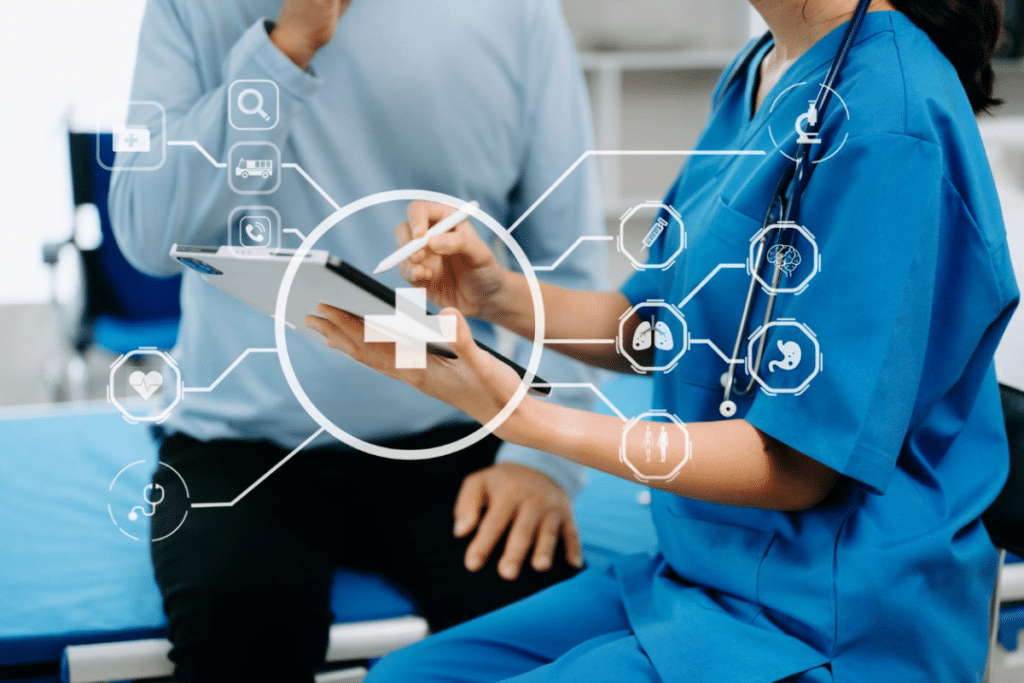
It’s the end of the year, and while you want to reflect on the months you spent delivering exceptional care to your patients, a wave of administrative tasks demands your attention. Between managing appointments, responding to urgent emails, and keeping up with consultations, the last thing you need is a mountain of paperwork to deal with.
You’re probably wondering: Is there a simpler way to handle year-end reporting for medical practices? The answer is yes. With the right Electronic Health Record (EHR) system, year-end tasks are more manageable, accurate, and far less overwhelming.
Let’s explore how an effective EHR system can simplify year-end reporting and ensure your practice is accurate, compliant, and—most importantly—stress-free.
Tackle Year-End Reports with the Right Tools
The Importance of Accurate Year-End Reporting
Before we discuss the EHR features that make year-end reporting more manageable, it’s essential to understand why this task is so critical.
Financial Reporting
Year-end financial reports are more than just another administrative task—they’re essential for audits, taxes, and charting the future of your practice. If you’ve ever rushed to finalize numbers or stressed over missed deductions, you know how crucial accuracy can be.
Precise financial reports provide a clear snapshot of your practice’s performance and set the stage for strategic financial planning. These insights empower you to make better decisions and build a foundation for long-term success.
Compliance Reporting
Staying current with industry standards, such as ICD-10 codes, HIPAA requirements, or insurance regulations, is crucial for medical practice compliance. Failure to submit a compliance report can result in fines, delayed reimbursements, or damaged relationships with insurers.
The good news is that tracking compliance doesn’t have to be stressful. With the right EHR features for year-end reporting, you can easily stay on top of all the necessary regulations, making the process much smoother and less of a headache.
Key EHR Features for Simplified Reporting
Your EHR system shouldn’t just be a tool for storing patient records—it should serve as a trusted ally that simplifies report generation, especially during the hectic year-end season. By tapping into its full potential, you can boost patient retention, minimize stress, and save valuable time.
Here are some essential EHR features for practices that help make the reporting process seamless and efficient:
Customizable Reporting Dashboards
When it comes to year-end reporting for medical practices, the last thing you need is to waste time sifting through irrelevant data. A well-designed EHR system allows you to create personalized dashboards that display exactly what you need—be it financial details, patient visits, or compliance status. These tailored dashboards save you precious time by organizing everything in one place.
Automated Data Compilation
Automated data compilation is an absolute must-have EHR feature for your practice. Imagine never having to manually gather patient information, billing codes, or procedure details for every report. With this tool, your EHR system automatically pulls together all the necessary data from patient visits, billing records, and other sources to generate accurate, timely reports.
By automating this process, you reduce human error and ensure that no critical information is overlooked. Whether you’re preparing for tax filings, audits, or year-end financial reports, automatic data compilation lightens your load and makes the process more efficient.
Claims Tracking and Reporting

Tracking claims is a crucial part of year-end reporting for medical practices, but without reliable billing and claims reporting software, it can quickly become overwhelming. Fortunately, modern EHR systems, such as those offered by EMR-EHRs, make monitoring each claim from submission to payment easy. You can identify and address issues—such as denials or underpayments— as they arise, ensuring you resolve everything before the year ends.
Automated Billing Updates
A common challenge faced by practices like yours at the end of the year is ensuring every charge is accurately accounted for. Missing a charge or making an error can throw off your entire year-end financial report. That’s where an EHR system that automatically reflects last-minute changes, such as adjustments to patient bills or updated insurance details, comes in handy.
With automated billing updates, you no longer need to manually track changes or worry about overlooking critical details. The system keeps everything accurate and up-to-date, ensuring your year-end billing report is spot on.
Built-In Validation
When it comes to year-end reporting, even the smallest mistakes can snowball into big problems. By leveraging EHR features like built-in validation tools, you can be sure that your reports are accurate and fully aligned with medical practice compliance regulations.
Here are some of the built-in validation tools you need for your practice:
- Error Reduction
One of the best validation tools in modern EHR systems today is built-in data entry error checks. If you’ve ever accidentally entered the wrong code or missed an important detail, you know how quickly errors can pile up. With this EHR feature, your system will immediately alert you when something is off—whether it’s a missing modifier, an incorrect procedure code, or incomplete patient information—helping you address issues before they escalate.
- Audit Trails
An audit trail tool is also vital to enhancing security and accountability in your year-end reporting process. It tracks every change made to a report, including who made the change and when. This EHR feature is especially valuable during audits, ensuring your practice’s data is transparent and easily traceable. Audit trails every modification, giving you the necessary backup to support your reports.
| Why a Reliable EMR-EHR System Makes a Difference Dr. Harry Li, Internal Medicine, Columbia, MD “IMS has provided the structure and organization needed for efficient practice of internal medicine. It has streamlined my office operation from reception to visiting notes to billing and collection. The charts are better organized, and access to test reports is immediate. It has clearly reduced the labor needed for filing (the equivalent of a part-time position in my office). It gives me peace of mind knowing that I have completed most of my tasks at the end of each day. My patients seem more satisfied with the timely communication of test results and prompt refilling of their medications using the system. In addition, we are provided with wonderful technical support for the installation and maintenance of the system in my office. IMS has enabled me to improve care delivery and run my office better.” |
Turn Year-End Reporting into a Snap with a Trusted EMR-EHR Solution
Year-end reporting for medical practices doesn’t have to be a dreaded task. With advanced EHR capabilities, you can streamline the process, minimize errors, and ensure your reports are both accurate and compliant.
As the year winds down, now’s the perfect time to assess your current EHR system. Does your practice have the right EHR features for year-end reporting? If not, it may be time to consult an EMR-EHR expert about upgrading or adding new tools to enhance your practice’s efficiency. By taking advantage of these solutions, you’ll save time, reduce stress, and enter the new year with confidence.
Call us at (480) 782-1116 to schedule a demo or request a callback!

























